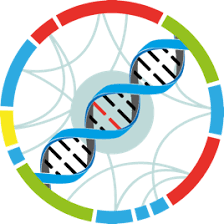Study : Comprehensive investigation of miRNAs enhanced by analysis of sequence variants, expression patterns, AGO loading and target cleavage
Identification
Name
Comprehensive investigation of miRNAs enhanced by analysis of sequence variants, expression patterns, AGO loading and target cleavage
Identifier
dXJuOkVWQS9zdHVkeS9QUkpOQTE5MDY3Mw==
Description
MicroRNAs (miRNAs) are a class of small RNAs which typically function by guiding cleavage of target messenger RNAs. They have been shown to play major roles in a variety of plant processes including development, and responses to pathogens and environmental stresses. To identify new miRNAs and regulation in Arabidopsis thaliana, 27 small RNA libraries were constructed and sequenced from various tissues, stresses and small RNA biogenesis mutants, resulting in 95 million genome-matched sequences. The use of rdr2 to enrich the miRNA population greatly enhanced this analysis and led to the discovery of 44 new miRNAs arising from both known and new precursors. Parallel Analysis of RNA Ends (PARE) data provide evidence that the majority guide target cleavage. The inclusion of novel stress/tissue conditions, such as submergence-stressed flowers, enabled identification of new stress regulation of both miRNAs and their targets, all of which were validated in wild type plants. By combining small RNA expression analysis with ARGONAUTE (AGO) immunoprecipitation data and global target cleavage data from PARE, a much more complete picture of Arabidopsis miRNAs was obtained. This combinatorial approach led to the discovery of AGO loading and target cleavage biases, which gave important insights into tissue-specific expression patterns, pathogen responses and the role of sequence variation among closely related miRNA family members. Overall design: Examination of various tissues, stresses and small RNA biogenesis mutants in Arabidopsis by high-throughput sequencing for small RNA profiling. We have used AGO-IP and PARE data from the published data, which were downloaded from NCBI GEO with the following accession number. AGO-IP from GSM253622, GSM707682, GSM642335, GSM642336, GSM512703, GSM512702, GSM707683, GSM707684, GSM707685, GSM149080, GSM253623, GSM304283, GSM642337, GSM642338, GSM253624, GSM415788, GSM707686, GSM707687, GSM707688, GSM707689, GSM415787, GSM149081, GSM253625, GSM415789, GSM415790, GSM304285, GSM415791, GSM415792 PARE sequencing data from xrn4 flowers were obtained from Gene Expression Omnibus with accession number GSM280227.
Genotype
| Accession number | Name | Taxon |
|---|
